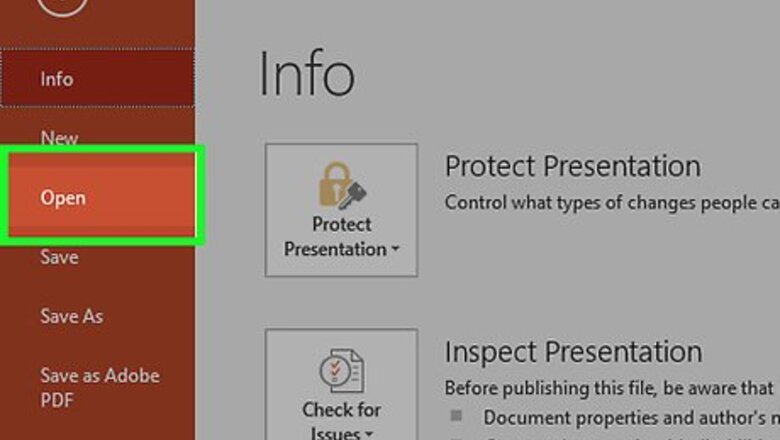
views
Adding a Picture
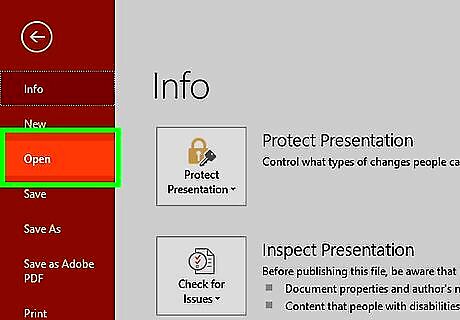
Open your PowerPoint presentation. You can add graphics to the background of any slide in your PowerPoint presentation. Open the presentation you want to edit in PowerPoint.
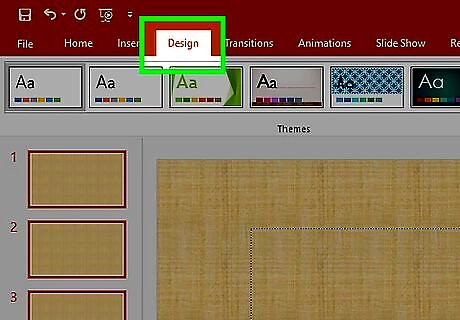
Click the Design tab at the top of the window. This will display the Design tools.
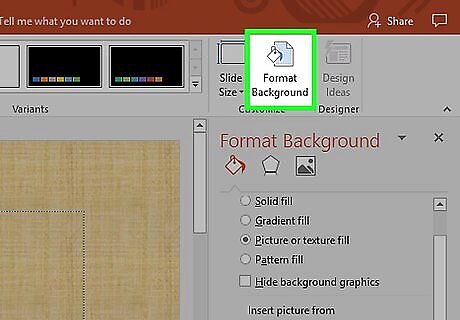
Click the "Format Background" button. You'll find this on the far right side of the Design ribbon. The Format Background sidebar will appear on the right side of the screen.
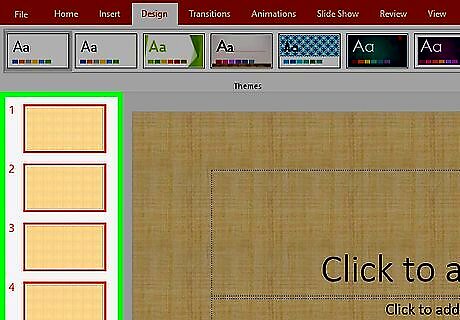
Select the slides you want to apply the background to. By default, your background changes will only apply to the active slide. You can hold Ctrl / ⌘ Command and click each slide in the slide list on the left that you want to select. If you want to apply the background to every slide in your presentation, you can do so at the end of this section.
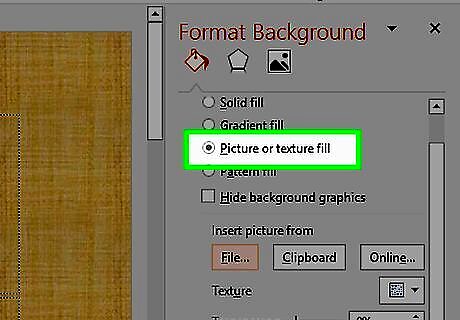
Select "Picture or texture fill." This will allow you to select a picture to use as the background. There are other fill options you can choose from, such as solid colors, gradients, and patterns. Selecting one will display additional options for that type of fill. This guide focuses on adding images and graphics to the background.
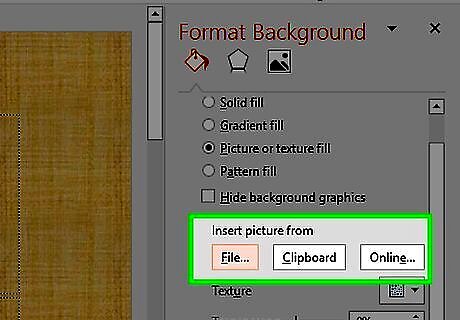
Choose the image that you want to insert as the background. To add an image that will not be stretched or squished, it should be 1280 x 720 pixels in size. Click the "File" button to select a picture from your computer. A file browser will open, and you can navigate to the image you want to use. Click the "Online" button to find pictures from online sources. You can perform a Bing web search, choose images stored in your OneDrive, or grab pictures from your Facebook or Flickr account. Click the "Texture" menu to select from a premade texture background. There are a variety of premade textures that you can pick from if you'd rather not insert your own image.

Click "Apply to All" to set the picture for all slides. The picture is normally just added as the background for the slides you selected. If you want to apply it to every slide, click the "Apply to All." This will set the background of every slide to the new image, including slides that you create later.
Applying Effects
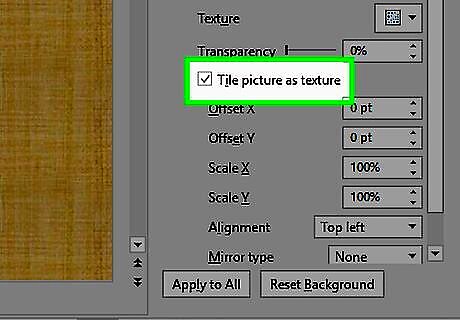
Check the "Tile picture as texture" to turn the image into a tiled texture. This works best for images that are small and can flow seamlessly into each other.

Adjust the tiling effect with the controls below. You can use these controls to adjust the spacing between the tiled images, whether or not they're mirrored, and the alignment.
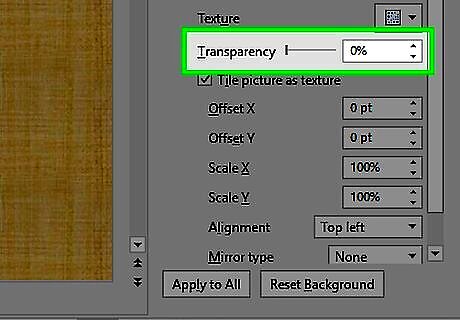
Use the transparency slider to adjust the image transparency. This is especially useful if you want to add watermarks to your slides. Setting a background image with a high transparency will allow you to use an image as a watermark without obscuring or distracting from the information on the slides.

Click the "Effects" button at the top of the "Format Background" menu to apply effects. This menu allow you to select from a variety of different effects that you can apply to your background image. You'll see a preview of each in the menu, as well as the name if you hold your cursor over it. Click the "Artistic Effects" menu and select the effect you want to use. When you select an effect, additional options may appear beneath it. The options vary depending on the effect you chose.
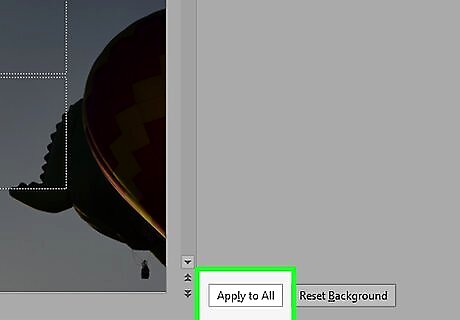
Click "Apply to All" to apply the effects to all of your slides. This will change all of the slides in your presentation to use the background image and effects you selected.
Using Slide Master View
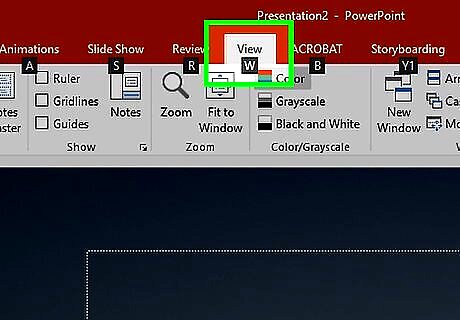
Click the View tab in PowerPoint. This will display different view options.
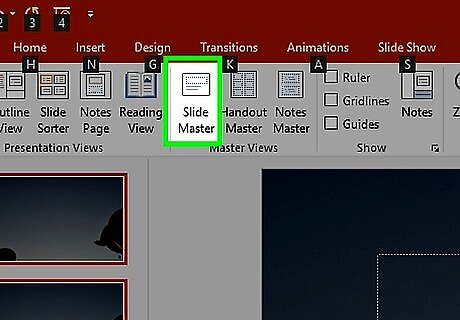
Click the "Slide Master" button. A list of all of your master slides will appear in the left frame. These are the theme slides for the different types of content in your presentation. The theme and graphics options on your master slides overrules regular background settings.

Select the master slide you want to edit. This will open the slide in the main view. You may need to scroll up on the list to view the main master slide. Different slides in the master list are for different slide layouts. Changes made to that master will apply to all slides with the same layout. The slide at the top of the master list will apply yo all slides in the presentation.
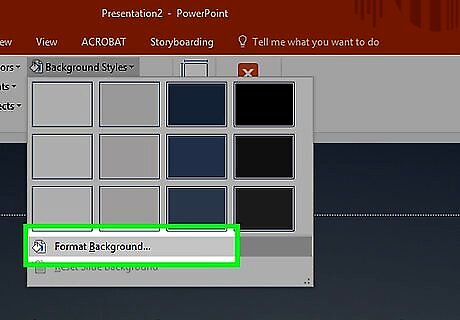
Click the "Background Styles" button and select "Format Background." This will open the Format Background sidebar.
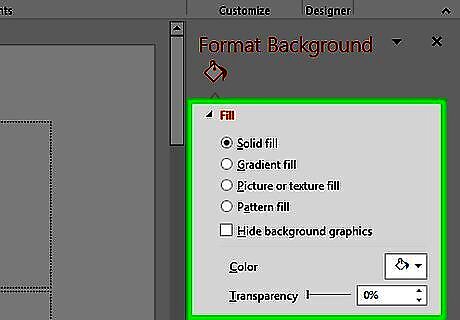
Adjust the background following the steps in the previous methods. Once the Format Background sidebar is open, you can adjust the background graphics using the steps outlined above. Use the "Picture or texture fill" option to set a new picture as the master background. This background will apply to every slide in your presentation.












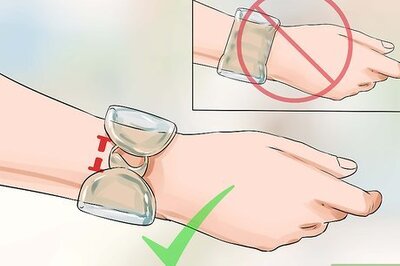
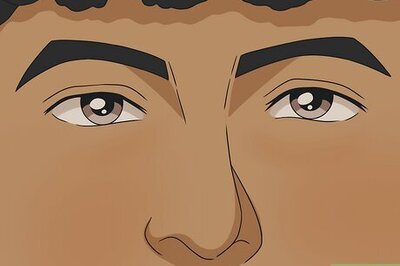


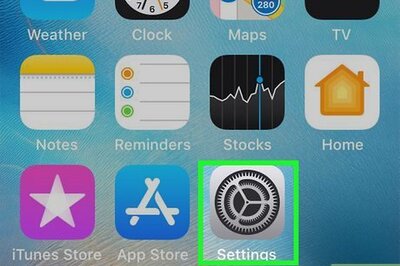

Comments
0 comment